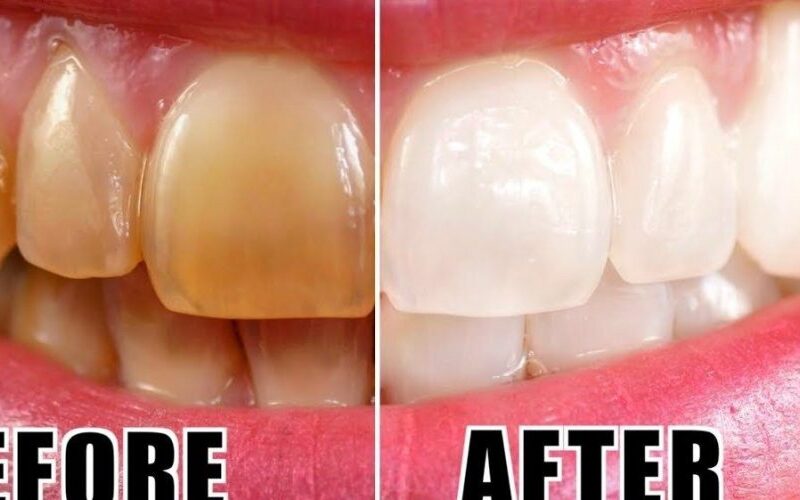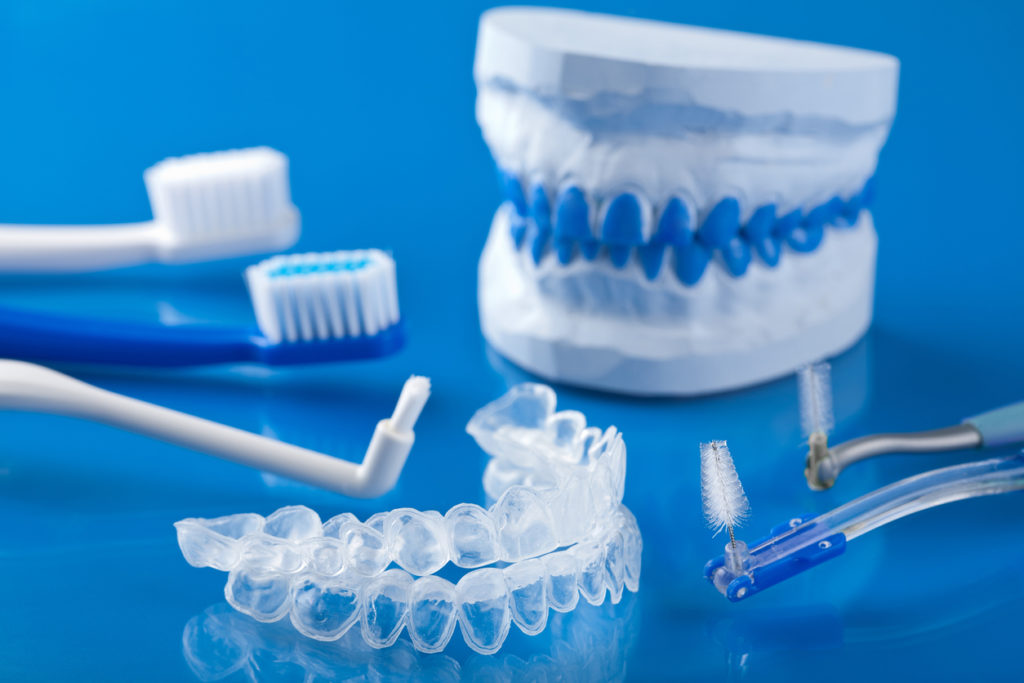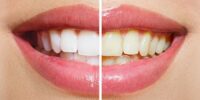The Risks And Benefits Of DIY Teeth Whitening

Do you feel like your smile has lost its sparkle? Teeth whitening is a popular way to brighten up your grin. But before you start, it’s important to understand the risks and benefits of DIY teeth whitening.
In this article, we’ll take a look at the pros and cons of do-it-yourself teeth whitening. From safety concerns to budget considerations, we’ll explore all the factors you should consider before you begin any type of teeth whitening treatment. We’ll also share tips on how to get the best results from your teeth whitening efforts. So if you’re thinking about trying DIY teeth whitening, read on for everything you need to know!
The sparkling smile of a Hollywood starlet can be dazzling, but achieving it can seem like an unattainable dream. DIY teeth whitening is an option that many people are exploring in an effort to get the perfect pearly whites. However, there are risks and benefits associated with this endeavor that should be considered before taking the plunge.
DIY teeth whitening offers convenience and potential cost savings. Many kits are available over-the-counter or online, and some claim to be just as effective as professional treatments. The products range from gels and strips that contain peroxide to toothpastes with abrasive ingredients.
While these methods may be simple to use, they do have drawbacks. Without proper application, users could end up damaging their enamel or experiencing tooth sensitivity. Additionally, the results may not last as long as those achieved through professional whitening services since the procedure isn’t monitored by a dentist or hygienist.
Ultimately, it’s important to weigh the pros and cons of DIY teeth whitening carefully before making a decision. While it may appear to be an easy fix for a brighter smile, it is not without risks and should be approached with caution.
Popular DIY Teeth Whitening Methods
Having discussed the risks and benefits of DIY teeth whitening, let’s now take a look at some of the most popular methods. The first is using hydrogen peroxide. Hydrogen peroxide is a powerful bleaching agent that can be used to lighten stains on teeth. However, it should be noted that it can also cause tooth sensitivity and should not be used more than once or twice a week.
Another popular method is using baking soda. Baking soda has a mild abrasive quality that helps to remove surface stains on teeth. It also has antibacterial properties which help reduce plaque buildup and can help prevent cavities. However, baking soda can also be too abrasive if used too often and may lead to damage to the enamel of your teeth. Therefore, it should not be used more than once or twice a week as well.
Safety Concerns
The risks of DIY teeth whitening must be considered before attempting any at-home treatments. Firstly, it’s important to note that the chemicals used in store bought whiteners are not regulated and thus may contain harmful ingredients. Additionally, without the help of a professional, there is no way to ensure that one is using the proper amount of product or that it is being applied correctly. Finally, incorrect use of these products can potentially lead to tooth sensitivity or even damage to the enamel which can cause further tooth decay and discoloration.
When deciding whether or not to attempt a DIY teeth whitening treatment, it’s important to weigh the potential risks against the potential rewards. Here are 3 things to consider:
- Are you comfortable with using potentially hazardous chemicals?
- Do you have enough time and patience for multiple treatments?
- Is the cost of store bought products lower than professional services?
Before attempting any DIY teeth whitening treatments, make sure you understand all safety concerns and possible risks associated with them as well as how much effort they require in order to achieve desired results. Ultimately, it’s up to you if this type of treatment is worth pursuing; just remember that professional services may be more effective and safe in most cases.
Potential Allergies And Reactions
It is estimated that one in five adults have experienced an adverse reaction to over-the-counter teeth whitening products. This means that not only are you at risk for potential allergies and reactions when using DIY teeth whitening, but it is also important to understand the risks associated with them.
The following table outlines the potential allergies and reactions associated with DIY teeth whitening:
| Allergy/Reaction | Symptoms |
|---|---|
| Tooth Sensitivity | Painful or uncomfortable sensations when eating or drinking cold or hot foods/drinks, air, or brushing teeth |
| Gum Irritation | Redness, swelling, tenderness of the gums |
| Allergic Reaction | Burning sensation in the mouth, redness of the gums and lips, difficulty swallowing or breathing, swollen tongue and throat |
It is important to note that these reactions can vary in severity between individuals. If you experience any of these symptoms while using a DIY teeth whitening product, it is best to stop use immediately and consult your doctor or dentist. Although there are risks associated with DIY teeth whitening products, there are also benefits if done properly. Taking necessary precautions can help minimize your risk for allergic reactions and ensure that you get the best results from your DIY teeth whitening routine.
Cost Comparison To Professional Treatments
Having discussed the potential allergies and reactions to DIY teeth whitening, it is important to also consider the cost comparison. Professional treatments such as those offered by dentists can be quite expensive, whereas DIY teeth whitening kits are considerably more affordable.
For example, a professional treatment may cost anywhere between $500-1,000 depending on the severity of staining and the type of procedure used. On the other hand, a DIY teeth whitening kit can range from about $20-50 for a single use or up to about $100 for a multiple-use kit.
Furthermore, when opting for professional treatments, there is also additional costs associated with travelling to and from the dentist and taking time off work to attend appointments. With DIY teeth whitening kits, you can save yourself all of this hassle by simply using it in your own home at your leisure. Therefore, it is clear that DIY teeth whitening kits offer an effective and much more budget-friendly alternative than professional treatments.
The Advantages Of DIY Teeth Whitening
DIY teeth whitening can provide many advantages. One of the biggest advantages is cost savings. DIY kits are typically much cheaper than professional whitening treatments. Additionally, they allow you to touch up your teeth in between professional treatments, which could save you more money in the long run.
These kits also provide convenience. You can perform the whitening process whenever and wherever it is convenient for you. Plus, you don’t have to worry about taking time off work or making an appointment with a dentist.
Here are some other advantages of DIY teeth whitening:
- You get to control the intensity of the whitening process according to your needs and preferences.
- The process is usually painless and fast, so you don’t have to spend too much time on it.
- You can easily find DIY kits at local stores and online retailers.
- Many DIY kits come with detailed instructions that make it easy for anyone to use them safely and effectively.
Overall, DIY teeth whitening offers many benefits that make it a viable option for those looking for an affordable way to brighten their smile without sacrificing convenience or safety.
The Disadvantages Of DIY Teeth Whitening
The darkness of stained and discolored teeth can be a deterrent to smiling, leaving one feeling like they are trapped in a dungeon of their own making. The lure of DIY teeth whitening can be tempting but comes with risks.
DIY teeth whitening products lack the professional guidance and oversight that comes with seeing your dentist or dental hygienist. These professionals know how to best care for your individual needs and are able to identify any underlying issues that may arise due to home treatments. Not only is there a risk of damaging enamel with overuse, but some products contain ingredients that can cause irritation or sensitivity.
It’s important to remember that while DIY treatments may produce short-term results, the long-term effects may not be safe or effective. It’s always best to consult a professional before considering any type of at-home treatment for oral health concerns.
Alternatives To DIY Teeth Whitening
The risks associated with DIY teeth whitening have been discussed, but now let’s look into some alternatives. There are several options available to those who want to get their teeth whitened without taking on the risk of doing it themselves. The following table summarizes the various alternatives and their respective benefits:
| Alternatives | Benefits |
|---|---|
| Professional Whitening | Fast results, customized results, monitored by a professional for safety |
| Bleaching Trays/Gels | Can be done at home under supervision of a dentist; may require multiple applications for best results |
| Toothpaste/Mouthwash | Can help maintain already-whitened teeth; may not produce dramatic effects with heavy staining |
| Natural Remedies (e.g. baking soda) | Inexpensive and safe; gentle abrasives can help remove surface-level stains over time if used regularly |
These alternatives come with different levels of cost and convenience, so it is important to find the one that best suits your needs. For example, professional whitening treatments provide fast and reliable results but can be expensive in comparison to natural remedies like baking soda which takes longer but is much cheaper. Ultimately, whatever method you choose should help you achieve the desired level of whiteness without risking your dental health.
Best Products For Use At Home
DIY teeth whitening is an exciting and cost-effective way to boost your smile. As with any home remedy, however, there can be risks if you don’t use the right product for the job. To ensure you get the best results with minimal risk, let’s look at some of the best products available on the market:
Kits:
- Crest 3D Whitestrips
- AuraGlow Teeth Whitening Kit
Whitening Toothpastes:
- Colgate Optic White Platinum Express White Toothpaste
- Sensodyne Pronamel Gentle Whitening Toothpaste
- Supersmile Whitening Toothpaste
These products are designed to safely remove surface stains and discoloration without damaging your enamel. They typically come as kits that contain a bleaching agent and a tray or strips that fit over your teeth. Some toothpastes also deliver whitening benefits by removing surface stains with gentle polishing action. With these products, you can enjoy brighter, whiter teeth from the comfort of your own home!
Dentist Supervision Vs Doing It Yourself
When it comes to teeth whitening, there are pros and cons to doing it yourself. On the one hand, DIY teeth whitening offers cost savings and convenience. Additionally, you have more control over the type of product used and the strength of the whitener. However, there are risks associated with attempting to whiten your teeth at home without professional supervision. These include potential damage from an incorrect application or strength of whitener, as well as sensitivity and allergic reactions.
It is important to weigh both the risks and benefits before deciding whether DIY or professional teeth whitening is right for you. Ultimately, if you decide that DIY is the best option for you, be sure to follow all safety instructions closely, research products carefully, and use a reputable brand that is recommended by your dentist.
Dietary Changes To Enhance Results
“You can’t have your cake and eat it too,” is a fitting idiom for DIY teeth whitening. While the process of whitening one’s teeth at home is relatively safe, there are some risks involved. Even more importantly, making dietary changes can help enhance and maintain the results of DIY teeth whitening.
Foods containing tannins, such as wine and tea, can discolor the teeth further. Additionally, foods that contain high levels of acidity can erode tooth enamel over time. To achieve optimal results from DIY teeth whitening, it’s important to minimize consumption of these types of foods and beverages. On the other hand, it’s important to increase intake of certain minerals like calcium and phosphorus which strengthen tooth enamel.
These dietary changes should be incorporated into a regular oral hygiene routine that includes brushing twice daily with fluoridated toothpaste and flossing once daily to keep plaque at bay. These simple steps can ensure that the results achieved through DIY teeth whitening are both safe and long-lasting.
Conclusion
The appeal of a brighter, whiter smile is undeniable. DIY teeth whitening products offer a convenient and cost-effective option for those looking to improve the aesthetics of their smile. While there are some risks associated with DIY whitening, it can be done safely when proper measures are taken. With the right product, dentist supervision, and dietary changes, you can achieve a beautiful white smile in the comfort of your own home.
Achieving a sparkling white smile with DIY whitening offers an affordable solution that’s much easier than getting expensive professional treatments. Imagine the confidence you’ll feel when you show off your pearly whites! Your friends will be amazed at how great your teeth look – no one needs to know you did it yourself! A few simple steps can make all the difference in achieving a dazzlingly bright smile with minimal hassle or effort.
DIY teeth whitening can be a great way to boost your self-confidence and improve your overall dental health without breaking the bank. With careful consideration of safety concerns, potential allergies and reactions, and cost comparisons to professional care, you can get beautiful results in just a few simple steps. So don’t wait any longer – take control of your oral health today and discover the perfect DIY solution for brighter teeth!









